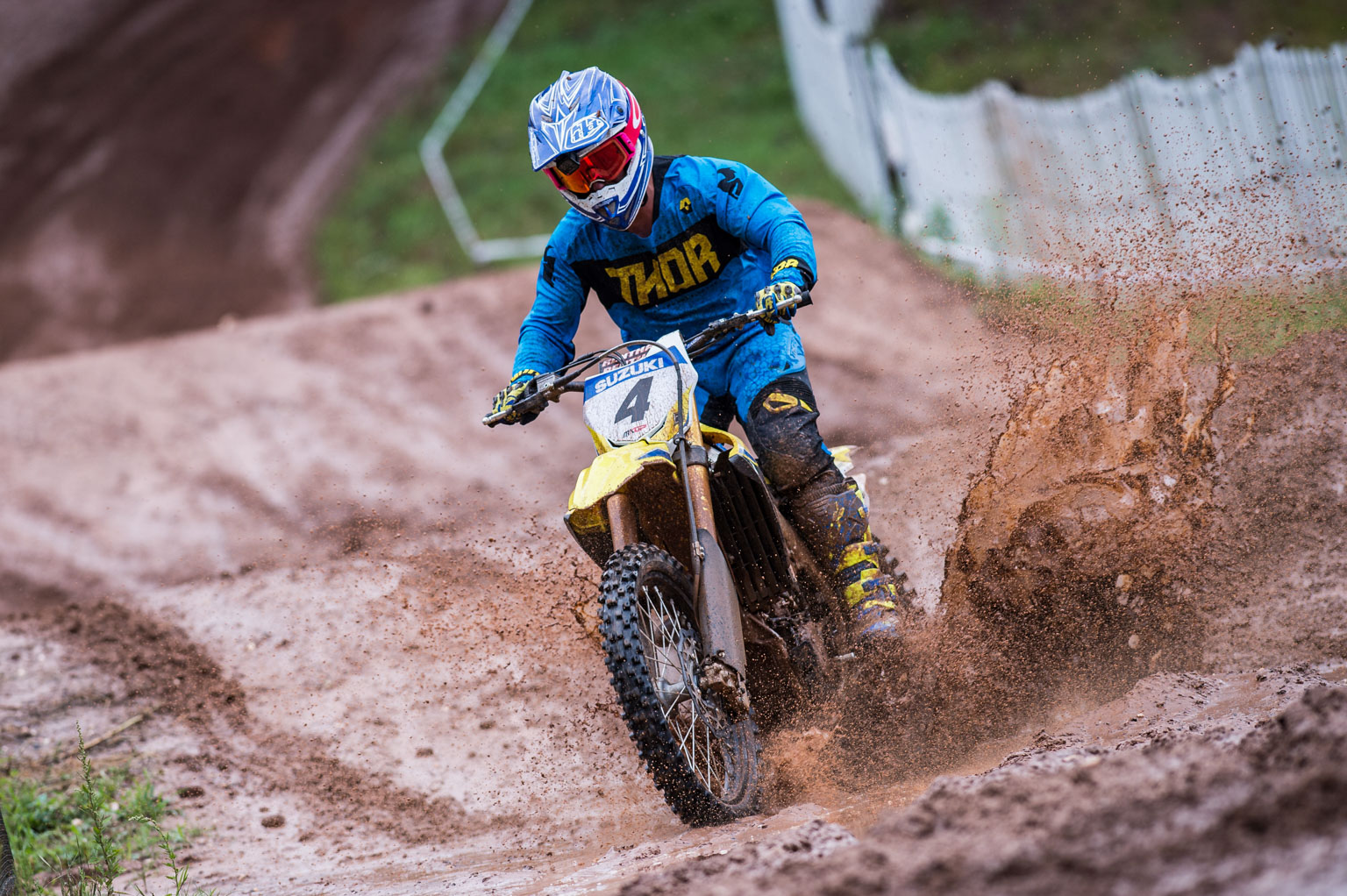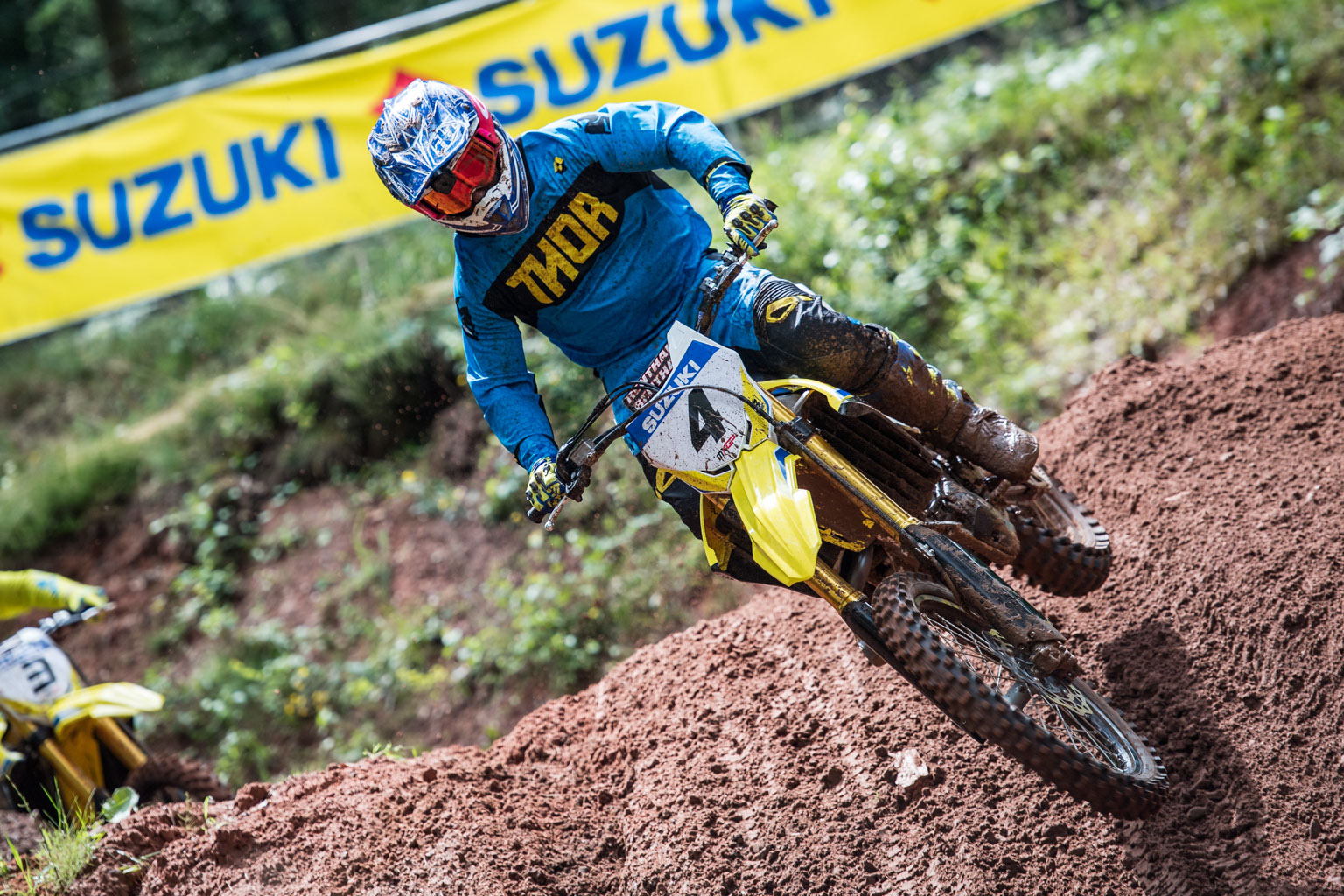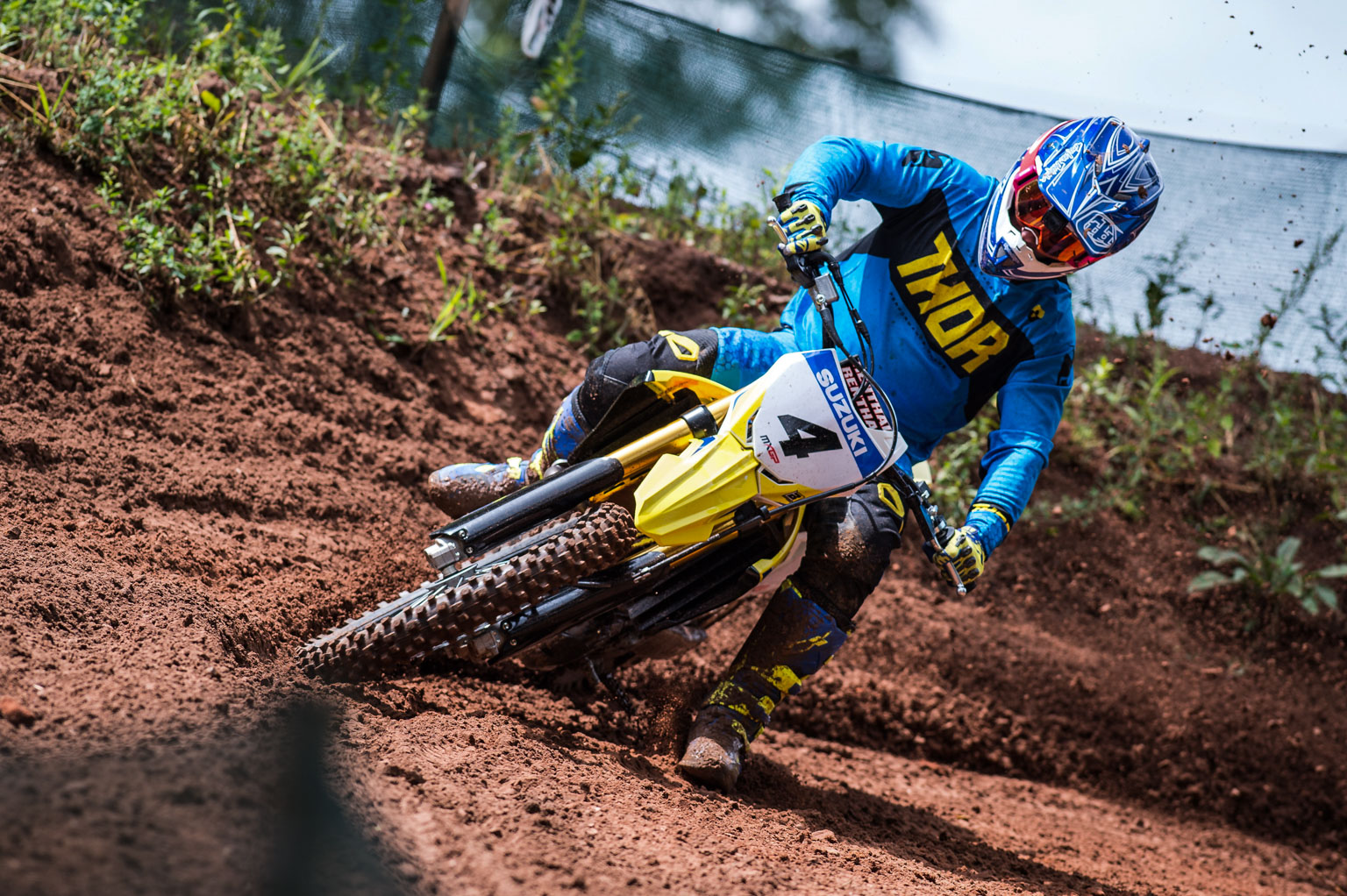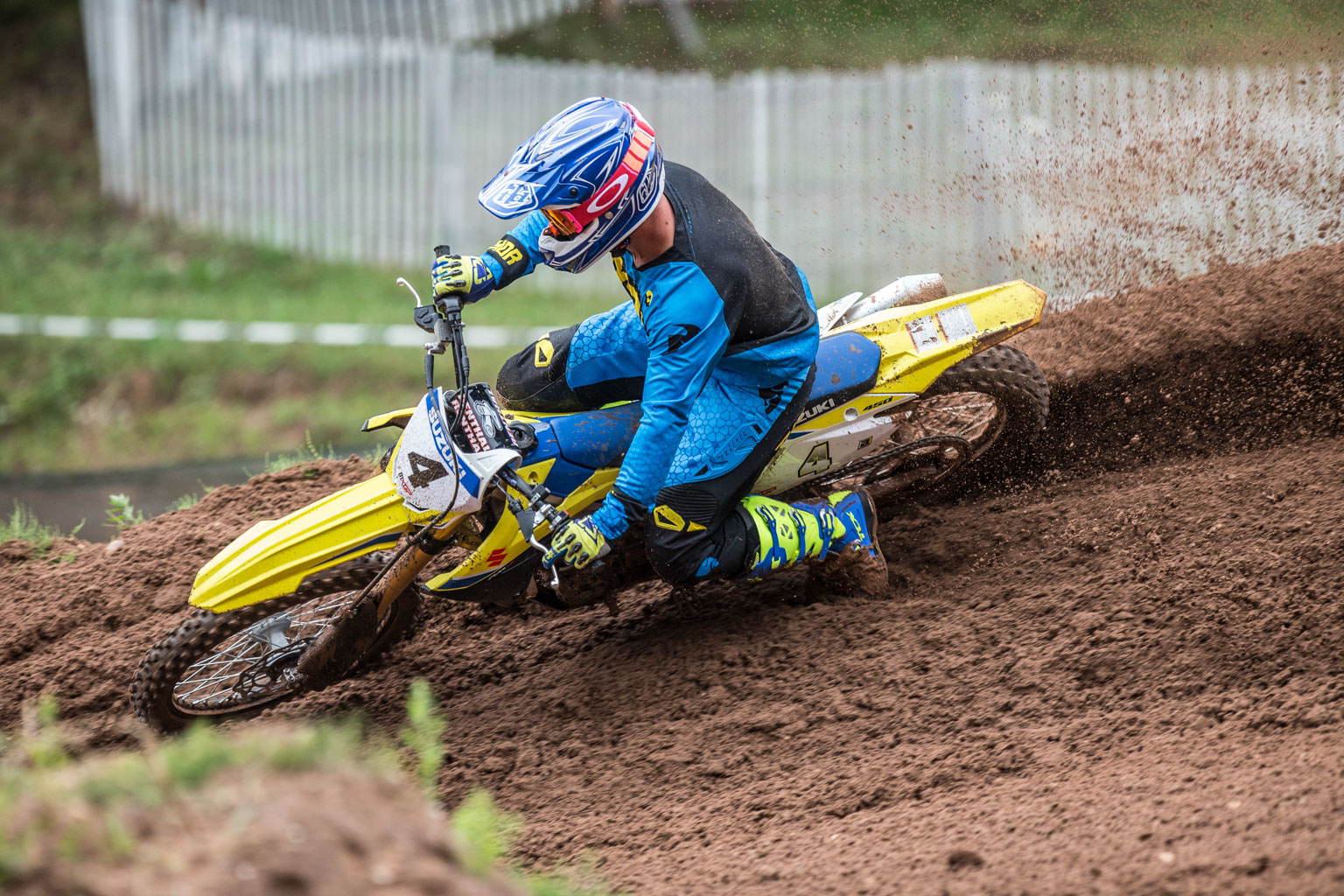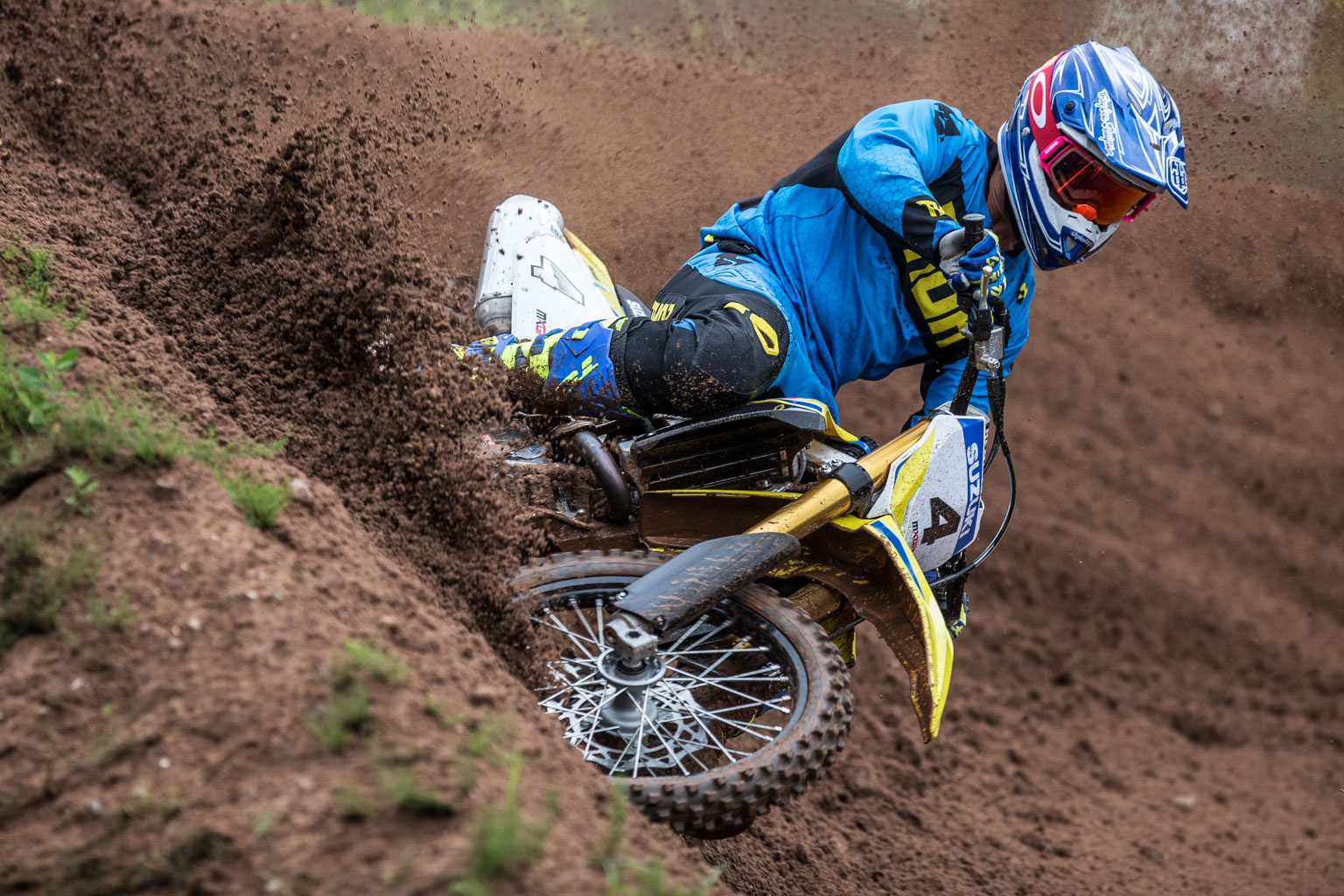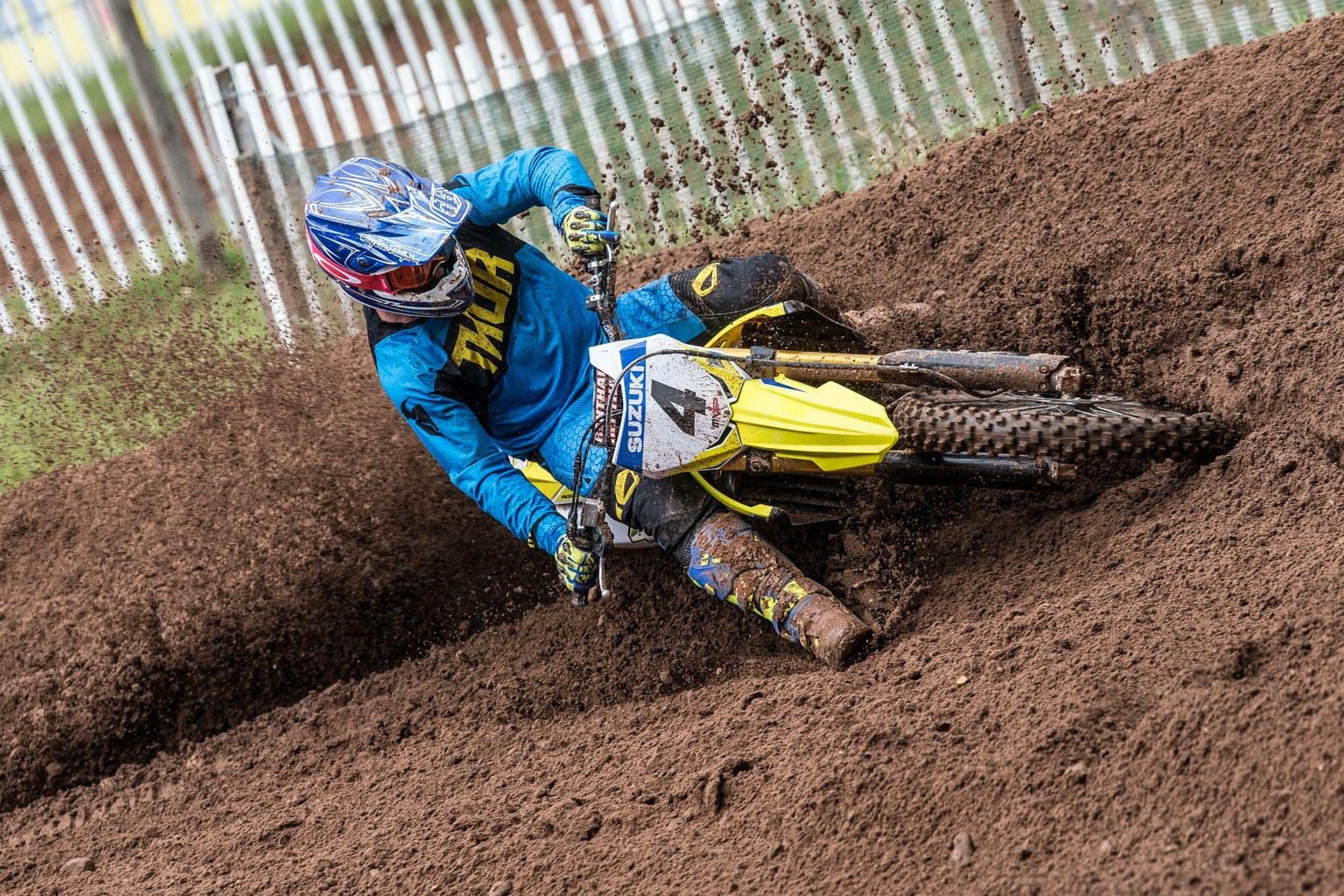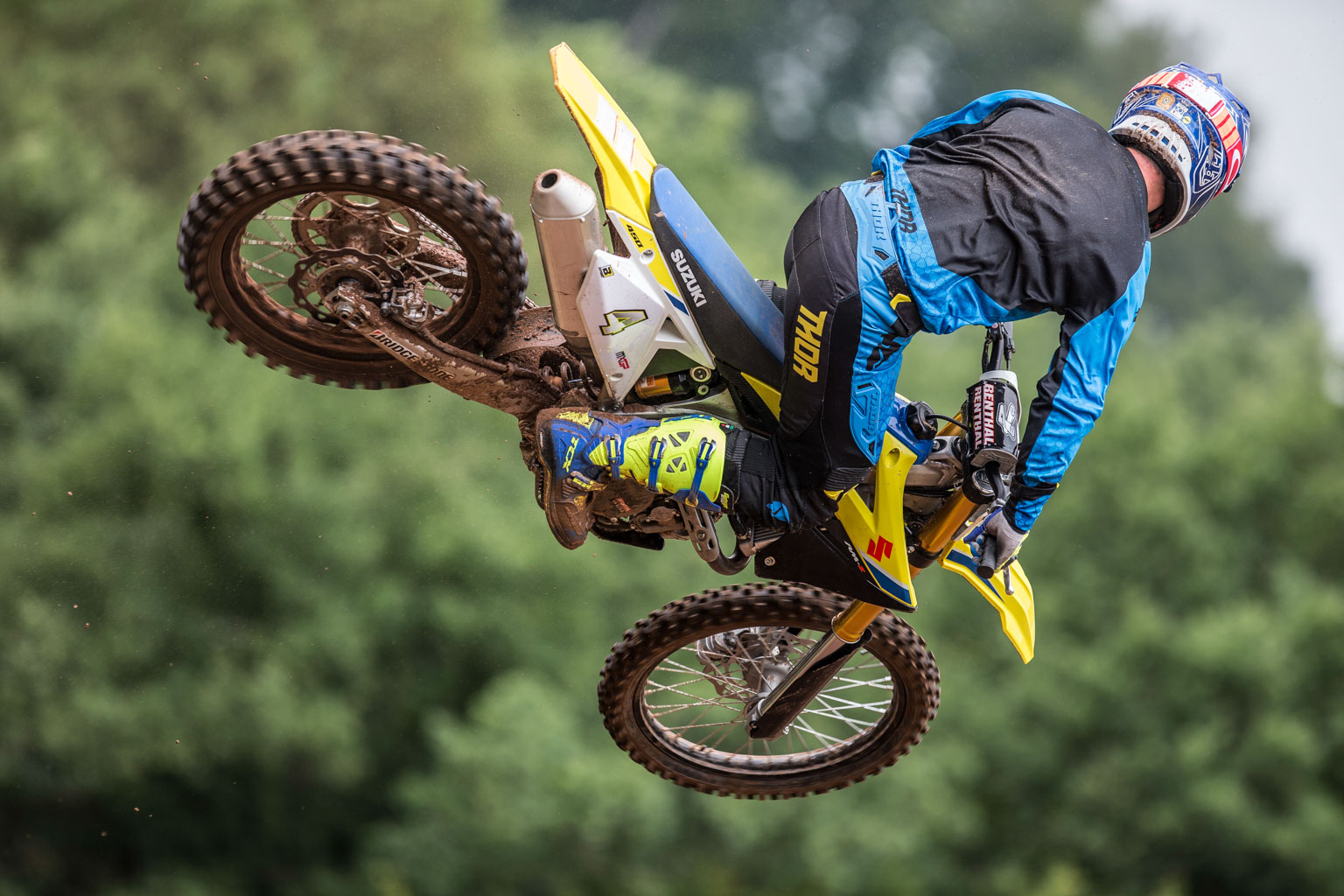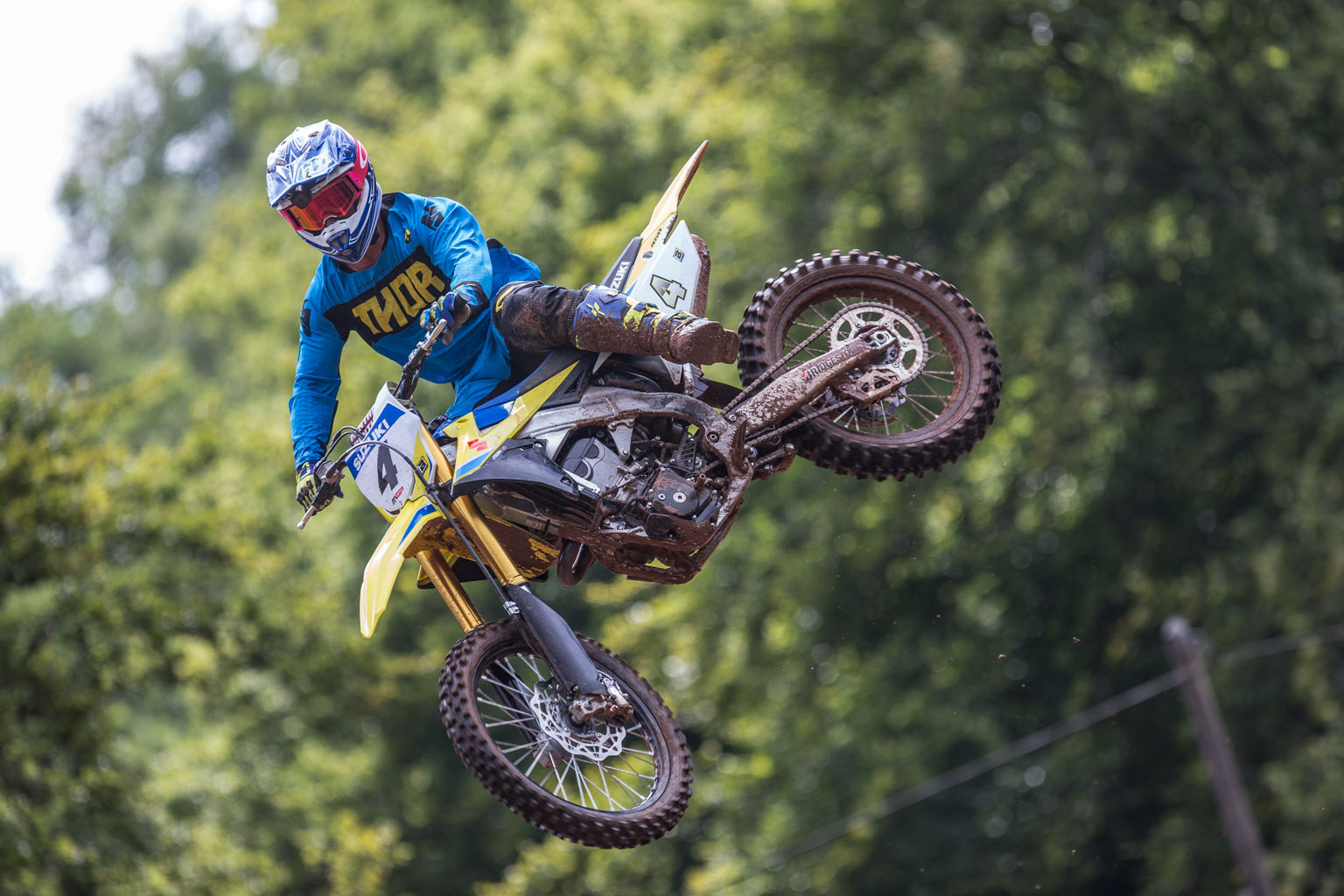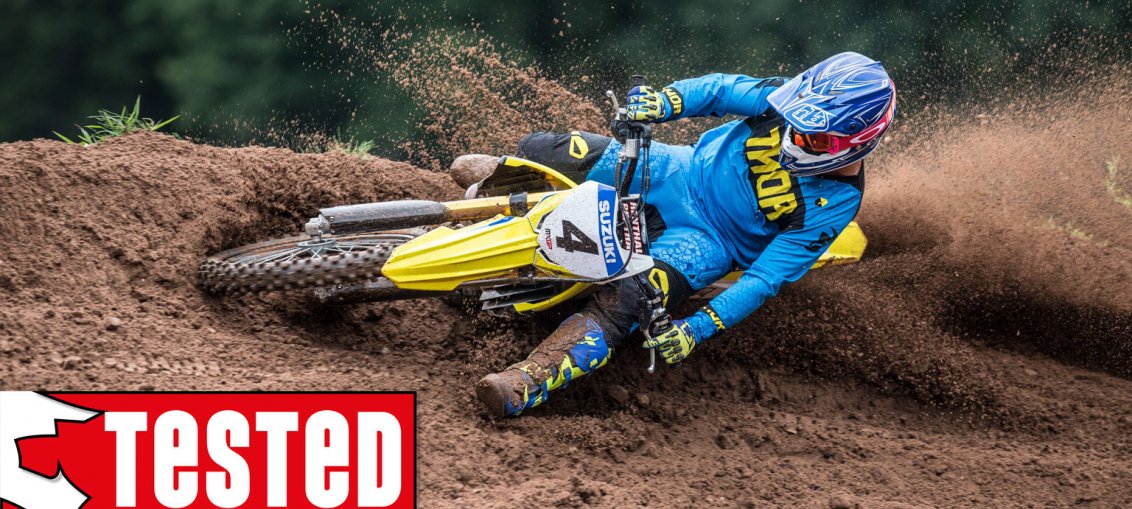
By Dave Willet
Suzuki has a long history of working closely with Europe and, more specifically, Belgium. In fact, Suzuki motocross bikes moved away from the corporate blue and white colour scheme to yellow to honour Belgium. Its one of the main colours in the Belgian flag and fledgling TM range of production bikes went from blue to yellow to honour Suzuki’s Belgian riders Roger De Coster, Joel Robert and Sylvain Geboers.
Suzuki maintains its own genuine factory team in Belgium, run for decades by Sylvain Geboers but now taken over by ten-times world champ Stefan Everts, maintaining the Belgian connection.
Everts knows a thing or two about riding, but also developing bikes to make them winners. He helped KTM create the 350 especially to suit Tony Cairoli, and a lighter, faster 450 KTM to lure Ryan Dungey.
Now the Belgian has got involved with the new RMZ450, claimed by Suzuki to have been built from the ground up to offer the perfect balance. Everts flew to Japan last August to oversee tests of the pre-production bikes. And of course his team of another Belgian, Kevin Strijbos plus Lithuanian Arminas Jasikonis, have been racing and developing the bike in GPs all year. Because of AMA production ruling, the USA teams haven’t tested the bike as they couldn’t race it in anyway. Ricky Carmichael has always helped by flying over to Japan and giving is feedback on the yellow machines, so no doubt it has a touch of RC development in the mix too. But really this bike has been European-driven in the final run up to production.
Suzuki has invested big into launching something all-new to the motocross world. As the most traditional of manufacturers, Suzuki has changed and improved the bike regularly, but always in small steps. And that has meant one of the biggest criticisms in the past has been the styling as RMZ hasn’t changed visual for nearly a decade now. Apart from a new front number plate a couple of years ago that you’d have to be a Suzuki specialist to have noticed.
So it’s fair to say the 2018 bike is a big deal for Suzuki. The frame and swingarm is all new, as well as the bodywork. The engine is much refined, the suspension has been altered hugely by ditching air forks for spring Showas, and the rear shock is the very latest Showa BFRC unit that no other manufacturer has yet. But of course, there is no electric start or smartphone app tuning, so Suzuki continues to stay on the conservative side of innovation. Or safer side, you might say.
Still, Suzuki says the bike has more peak power, more low-end torque and throttle response and new traction control system with improved holeshot assist control.
The engine may look the same, but the cylinder head intake port shape is changed to tumble flow the fuel/air mixture by 25% to help increase power output, and a 30% larger air cleaner opening is combined with a more direct air cleaner outlet tube path to the throttle body.
Suzuki designed a new throttle body design with a relocated fuel injector fed by a new, higher-pressure fuel pump that directly sprays fuel at the butterfly valve, and new throttle body design eliminates the complex control linkage so the rider feels a more direct connection to the engine when you crack open the throttle.
The intake camshaft profile is new for more valve lift, the aluminium cylinder is finished with Suzuki’s coating, the piston includes strengthening ribs near the wrist pin bosses to boost reliability.
There may be no electric start but starting has been worked on with refined internal gears, larger air cleaner and breather system, plus an automatic decompression system.
To meter the power delivery, there’s a new ECU and traction control that unlike a road bike traction control system, does not measure rear tyre spin but increases in revs. The refined five-speed gearbox has a precisely machined shift cam for accurate gear selection and a new machining processes also increases the precision of the matching gears.
The main frame is new and slimmer as well as being 700g lighter, with a shorter wheelbase. The subframe is new, there’s a new upper triple clamp, and new brakes all round including an oversize front, finally. The fuel tank is now plastic instead of aluminium, and there are lots of other detail changes like a slimmer and lighter seat. In all, it’s a massive change.
Suzuki wheeled the bike out at the Motocross de Bitche track in France, a circuit carved into a hillside on sandy ground. And as it rained on and off before and during the test, it made for an interesting day of riding. After all, the bike may have lots of new components and is claimed to be faster and better handling, but a lot can happen between the marketing spiel and the reality.
First impressions when sitting on the bike is everything feels as it should with the controls all in a good position. Out on track, the bike felts small and slim between your legs. The bike feels well balanced and we hear a lot regarding mass centralisation these days – even though Suzuki don’t bang on about it. But this bike feels well centralised and easy to move around.
However I did feel nervous because I had to learn the track and the testing conditions, and the bike had new Showa suspension which hadn’t been used before and bedded in. Everts had a ride and for him, it was also the first time he’d tried the suspension as he’d always used the bike using the full factory team stuff which includes air forks by the way. Even the team riders hadn’t tried the stock suspension. We only had three sessions to test and report on the bike and spending the first session bedding in the suspension means you don’t get the greatest first impression. However if you buy a new bike and it’s not bedded in, you have to run it all in so this is quite relevant. We normally turn up to bikes which have been slightly used to run them in and bed in the suspension. The bikes we used had been run in – and had marks on the engine cases and swingarms to prove it. But the suspension was brand new. I can only guess they’d be used with factory suspension in.
The brand new suspension means the bike felt a little rigid at first, and the suspension was a little nervous on the rear. But that massively changed later on as everything bedded in. And the good news is that legendary Suzuki front end grip is still there, offering a planted feel.
This bike comes with production version of the factory A-kit Showa suspension which was used by several factory teams last year. This stuff wasn’t even available to the public to buy. With the forks being 49mm instead of 47mm which came on the 2017 RMZ, I think they may need a little more use to free them up properly and get a little flex back.
The 450 I had wasn’t set for my weight as I need to share it with another journalist. He wasn’t the same speed or weight as me so I couldn’t make adjustments until the end of the day. Lucky for me it rained and the Italian testers went home early, giving me an extra session on the bike so I got the chance to make adjustments and could really get a good feel for the bike.
I asked the Showa technician to start off with the normal things such as riders sag. I had my riders sag set to 112mm as before it was set at 105mm. The tech boffin also suggested we dropped my forks through in the clamps. I’d mentioned I didn’t feel right on the bike because it was riding a lot on the front end which made the shock super sensitive, resulting in me getting an unwanted kick at times. After making these simple changes, the bike was transformed and one I really enjoyed riding.
I also adjusted the compression and rebound damping on the forks. The Showa guy just wanted to adjust the compression first and not the rebound, so I tried it two clicks softer and the bike felt a little better but for my style it was sitting in the middle of the stroke and packing in certain sections of track. I liked the plusher action though so I meant back to standard on compression and four clicks faster on the rebound which give me a plusher action but kept the stroke high so that was perfect for me.
It shows how a few subtle changes can really affect how a bike rides, and that the Suzuki will benefit from careful dialling in by any potential buyers.
After the adjustments were made, the bike was so much fun – even on the rain-soaked track it was so easy to ride, I was just clicking off the laps.
The track was tricky in places and dry in others due to the sandy ground. The RMZ just moved where I placed it and it was so easy to swap lines. Front end grip is something Suzuki have always been able to excel at and it’s just got better.
The drive when exiting from the turns is something to shout about too, thanks to the incredible rear shock that works so well. Suzuki have always been able to make a chassis that delivers and that’s still the case. And it’s essential to get the forks and shock set up right, which is not as easy now as the forks have reverted to springs instead of air.
To be honest I like the air fork and it seems so do the factory teams as most use air now so they must be beneficial in terms of weight and feel. But that’s all irrelevant now because the spring forks are back on the RMZ and you don’t get much better than factory A-kitted Showa. I believe most riders have just got into the habit of using air forks and now the Japanese manufactures have taken them away.
The rear shock, linkage and tapered swingarm is all new and they do work in harmony. The rear shock is Showa’s new BFRC unit which stands for Bounce-Free Rear Cushion. So very Japanese. This shock is very active on the rebound stroke which is what makes it track so well and it works best on high-speed hits. It’s important to understand how it works, what makes it works well and get it set up correctly. Then it delivers with a great feel and lots of traction.
The engine may not be all new but what Suzuki has done really does work. The power of the bike is awesome and backs up Suzuki’s claims its bhp is up on previous years. The throttle response has always been good on the RMZ and the 2018 is even better. There’s even more of a kick in the mid-range too.
Suzuki has changed the throttle body and moved the fuel injection to the bottom of the body which aids to the bottom and midrange delivery. The improved flow, also helped by the airbiox getting a more direct run into the engine, equals a harder hit and more power over the full power curve. The new cam profile and piston has helped, too.
I loved engine but I often struggled a little with being in the right gear. Quite often I had to go down to second which is too down and makes the bike unsettled, but I couldn’t ride third as it didn’t pull it right off bottom. This is one bike that gets affected quite severely if you leave it in a very low gear and rev it hard, as it just unsettles the suspension. I also felt like the bike wanted to cut out, even though it never did.
This issue was sorted very simply by a different coupler – they grey one which made the engine richer. This simple change transformed the power and give it a much smoother feel. The response was controllable and the torque was improved. In fact I’d say it cleaned up the power curve by probably taking out a dip in the power curve. And the motor pulled third in places it just wasn’t possible before. Before the coupler swap, the clutch also started to show some free play. But by adding more fuel, this also topped, suggesting the motor was lean and was reaching a temperature it didn’t like too much. If I owned a new RMZ450, I’d run the richer coupler every time as I can’t stress how god this made the bike feel – I loved it and the bike was incredible to ride.
With the suspension dialled and the motor running sweetly, my speed picked up loads and I really started to feel at home and go fast. And of course the new oversize front brake helped a lot as it’s insanely responsive compared to the 2017 version.
Verdict
The new 2018 Suzuki RMZ450 is the first ground-up revamp for the bike in almost a decade and Suzuki had done it well. It’s faster, slimmer and easier to go fast on than the old bike. And it may not have air forks, electric start, smartphone control but is a tried-and-trusted package of well-proven technology.
Suzuki always makes 450s that handle well, are plenty fast enough, are reliable and don’t cost the earth. And the new 2018 continues that, especially as it’s priced under its competition at £6999 when it goes on sale in September.
It’s not lost any weight though, so is still the porker in the pack. But once underway, the bike doesn’t feel heavy. Right until the point you have to lift it to pout it on the stand!
It’s a bike that anyone from clubman to expert can get on, feel right at home and go fast straight away – as long as they get it set up right. The new suspension and motor needs careful setting up to get the best out of it, and then the bike is ready to race at all levels. With the latest BFRC Showa shock and A-kit style spring forks, the suspension is top-quality kit once you understand how it works best. If you’re willing to get it dialled in, you can’t go wrong with the new RMZ450.
2018 Suzuki RM-Z450 Specs
ENGINE
Type: Single-cylinder four-stroke
Displacement: 449cc
Bore x stroke: 96.0 x 62.1mm
Starting: Kick w/ automatic decompression
Compression ratio: 12.5:1
Fuelling: EFI w/ 44mm throttle body
Valve train: DOHC
Cooling: Liquid
Lubrication: Semi-dry sump
Transmission: 5-speed, constant mesh
Clutch: Web multi-plate
Final drive: DID 520 chain
CHASSIS
Front suspension: Fully adjustable inverted forks
Rear suspension: Linkage assisted fully adjustable Showa BFRC shock
Front tyre: 80/100-21; Bridgestone Battlecross X30
Rear tyre: 110/90-18; Bridgestone Battlecross X30
Front brake: 270mm disc
Rear brake: Disc
DIMENSIONS and CAPACITIES
Wheelbase: 58.3 inches
Seat height: 37.8 inches
Ground clearance: 13.0 inches
Fuel tank capacity: 1.7 gallons
Curb weight: 124kg/ 274 pounds

